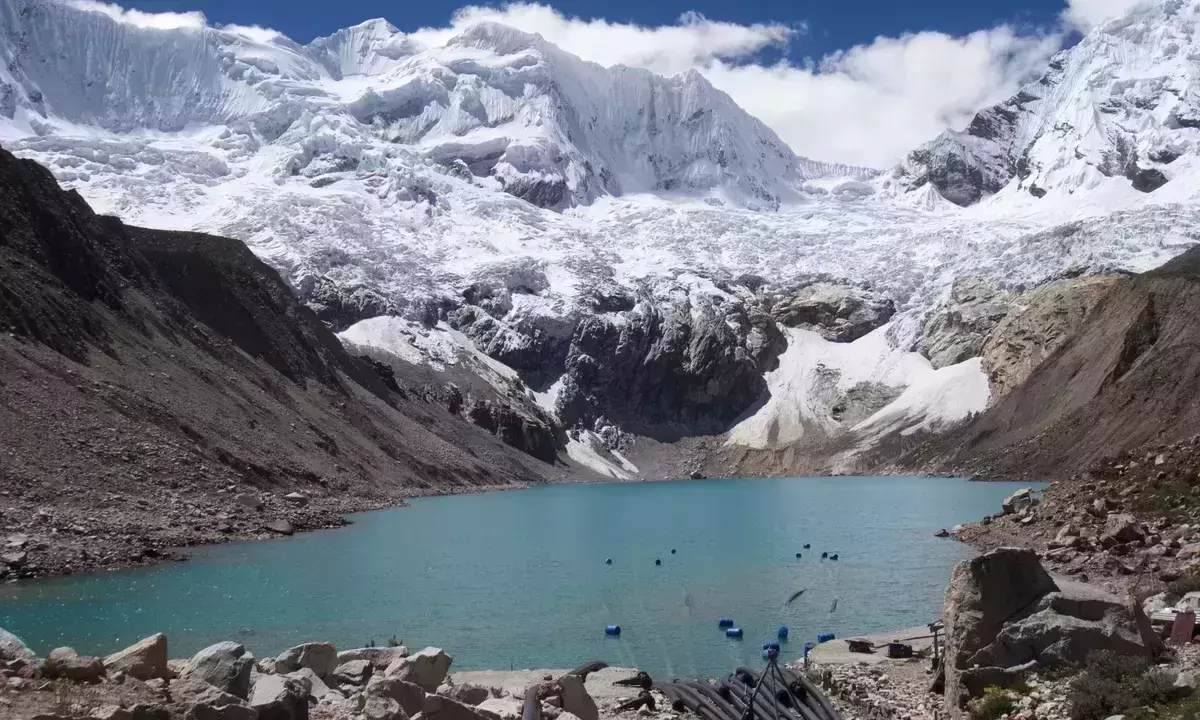
Floods caused by melting glaciers threaten millions across the world: report
text_fieldsPopulations living near water sources are at increasing risk of floods due to melting glaciers. More than half of the globally exposed population is in India, Pakistan, Peru, and China.
A new study says glacial lake outburst floods (GLOFs) are a major hazard to human existence because it is putting millions of people at risk of flash flooding. The size of glacial lakes has grown rapidly since the 1990s due to global warming and the downstream population's socio-economic vulnerability has never been quantified before.
Experts say 15 million people across the globe are exposed to impacts from potential GLOFs, reported Reuters. Himalayan glacial lakes have increased by about 9% in number and 14% in area. Over 200 lakes are currently posing a high risk to Himalayan communities.
The research is focused on High Mountains Asia (HMA) because the population living here is closest to the danger zone. Around one million people live within 10 km of over 2,000 glacial lakes. The danger is highest when a large number of people live near a lake.
Global warming is a major reason behind glacial lake outbursts. Around 332 gigatonnes of ice were lost per year between 2006 and 2016. Since 1990, the number and volume of glacial lakes have increased by 50%.
Asian populations are at higher risk because the mountain glaciers are not well monitored and lack long-term observations. The best-studied glacier in the Himalayas is Chhota Shigri which has data going back 20 years.
After the heatwave of 2022, scientists measured Chhota Shigri's mass and took a look at mass balance measurements - the difference between how much ice a glacier gains and loses in a year - of the past two decades. They found that 20222 was its worst year on record and lost three times as much mass compared to its 2002-2022 yearly average.
























